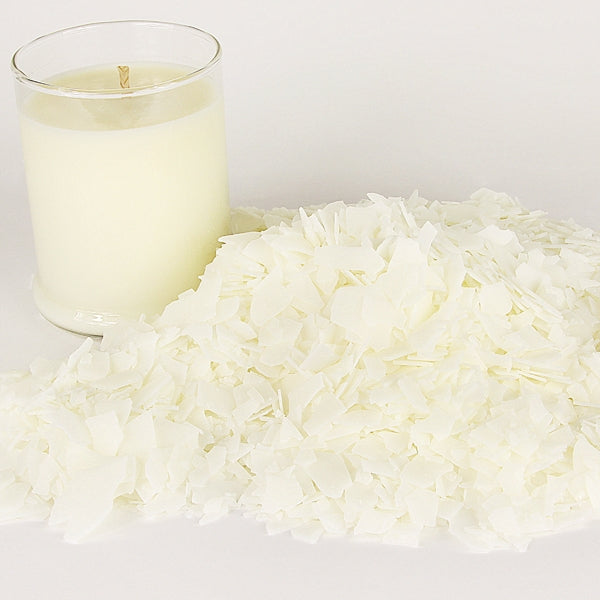Infuse Your Home with the Aroma of Crystal Soy Candles and Home Fragrance
Infuse Your Home with the Aroma of Crystal Soy Candles and Home Fragrance
Blog Article
From Wick to Wax: Recognizing the Chemistry Behind Soy Wax Candles and Their Ecological Effect
As we brighten our rooms with the warm glow of candle lights, there lies a world of detailed chemistry behind the apparently straightforward act of lighting a soy wax candle light. The choice in between soy and paraffin wax extends past plain aesthetic appeals, delving into the world of ecological impact and the extremely make-up of the products. Understanding the molecular structure of soy wax and its combustion procedure clarifies the discharges released into our surroundings. Join us as we untangle the scientific complexities behind soy wax candles and discover their ramifications on our environment.
Soy Wax Vs. Paraffin Wax
When comparing soy wax and paraffin wax for candle making, it is important to comprehend the unique features and benefits of each product. Soy wax is an all-natural, renewable source originated from soybean oil, making it biodegradable and environmentally friendly - home fragrance. On the other hand, paraffin wax is a byproduct of oil refining, which raises worries concerning its ecological effect and sustainability
Soy wax candle lights melt cleaner and produce less residue contrasted to paraffin wax candle lights, making them a much healthier choice for interior air quality. Furthermore, soy wax has a lower melting point, allowing for a longer-lasting candle light that spreads scent better. Paraffin wax, on the various other hand, often tends to melt faster and much less cleanly, possibly releasing damaging chemicals into the air.
From a sustainability perspective, soy wax is favored for its biodegradability and eco-friendly sourcing, aligning with the growing consumer preference for ecologically mindful products. While paraffin wax has actually been a traditional choice in candle light making as a result of its cost and convenience of usage, the shift towards eco-friendly alternatives like soy wax is obtaining momentum in the industry.
Chemical Make-up of Soy Wax

Burning Refine in Soy Candles
The chemical make-up of soy useful content wax straight influences the burning process in soy candles, affecting variables such as shed time, fragrance launch, and environmental influence. When a soy candle light is lit, the warm from the fire melts the wax near the wick.
The combustion performance of soy candles is affected by the purity of the soy wax and the top weblink quality of the wick. A clean-burning soy candle light with a correctly sized wick will certainly create a steady fire and lessen residue formation. This not just extends the shed time of the candle light yet also boosts the release of fragrances. Additionally, soy wax candle lights have a lower ecological influence compared to paraffin candle lights because of their eco-friendly and naturally degradable nature.

Environmental Advantages of Soy Wax

Thought about a sustainable alternative to typical paraffin wax, soy wax supplies notable ecological advantages that make it a preferred selection amongst eco-conscious consumers. One significant benefit of soy wax is its sustainable sourcing. Soy wax is stemmed from soybean oil, which is mostly grown in the United States. The cultivation of soybeans helps support neighborhood farmers and reduces the reliance on non-renewable nonrenewable fuel sources used in paraffin wax manufacturing. In addition, soy wax is biodegradable, indicating it breaks down naturally without launching damaging contaminants right into the atmosphere. This characteristic makes soy wax candle lights an extra eco-friendly choice compared to paraffin wax candle lights, which are made from petroleum, a non-renewable resource. In addition, soy wax burns cleaner and get redirected here creates less residue than paraffin wax, adding to better indoor air quality and minimizing the requirement for cleaning and maintenance. On the whole, the environmental advantages of soy wax align with the growing demand for lasting and environmentally friendly items in the market.
Recycling and Disposal Considerations
Reusing and correct disposal of soy wax candle lights play a critical duty in keeping ecological sustainability and lowering waste in households and neighborhoods. When it comes to recycling soy wax candles, the initial step is to make certain that the candle light has actually melted entirely.

In regards to disposal, if recycling is not a choice, soy wax candle lights are naturally degradable and can be securely disposed of in most family waste systems. Nevertheless, it is always suggested to consult regional recycling centers or waste administration solutions for particular guidelines on candle light disposal to make sure appropriate handling and environmental management.
Final Thought
To conclude, the chemistry behind soy wax candle lights exposes their ecological advantages over paraffin wax candles. Soy wax, derived from soybean oil, burns cleaner and creates much less soot when contrasted to paraffin wax. The burning procedure in soy candle lights is much more reliable, causing a longer and extra even burn. Furthermore, soy wax is biodegradable and eco-friendly, making it a more lasting option for candle light manufacturing. Reusing and proper disposal of soy wax candle lights additionally add to their ecological effect.
When contrasting soy wax and paraffin wax for candle making, it is crucial to comprehend the unique qualities and advantages of each product (home fragrance).Soy wax candle lights burn cleaner and release much less residue compared to paraffin wax candles, making them a much healthier selection for indoor air quality.Thought about a sustainable option to standard paraffin wax, soy wax supplies notable ecological benefits that make it a popular choice among eco-conscious consumers. Soy wax burns cleaner and generates less soot than paraffin wax, contributing to much better interior air top quality and decreasing the demand for cleansing and upkeep.In conclusion, the chemistry behind soy wax candles discloses their environmental benefits over paraffin wax candles
Report this page